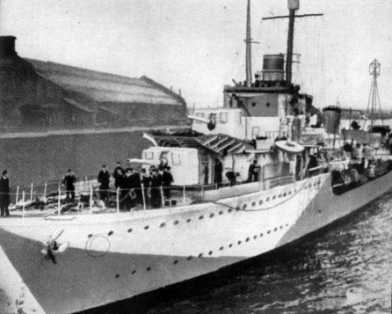
The deadliest enemy on sea at first:
An escort destroyer. Fast and manouverable with a big load of depth charges and heavy guns.
This is the "Hesperus". Notify the scratches at the stern. They are from a ramming attack against U-357!
ALLIED OPPONENTS/ WEAPON TECHNOLOGIES
INDEX
Allied Opponents
Ships
Airplanes
Men
Allied Anti-U-boat weapons
Ship based
Airplane based
German
counter-measures
Back to Map
It is always good to know the enemy. Here is a collection of the weapons which are used against us.
 |
The deadliest enemy on sea at first: An escort destroyer. Fast and manouverable with a big load of depth charges and heavy guns. This is the "Hesperus". Notify the scratches at the stern. They are from a ramming attack against U-357! |
This is the HMS "Vanoc". This escort destroyer sunk U-100 Kptltn. Schepke. After depthcharging the U-boat, the "Vanoc" rammed U-100. In front you can identify a normal depth charge, which was in use overall during the war. |
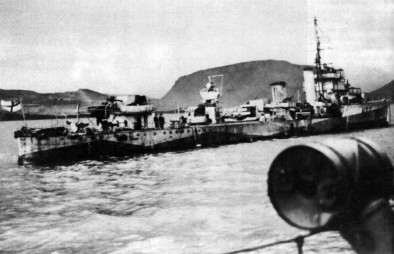 |
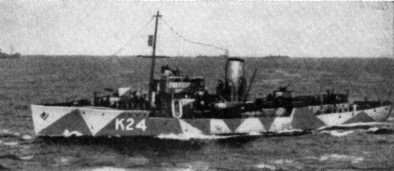 |
Not so fast as a des- troyer, but still a deadly enemy for a submerged u-boat. Korvettes! The best way to evade from these enemies is to stay on surface and run with all flank ahead! |
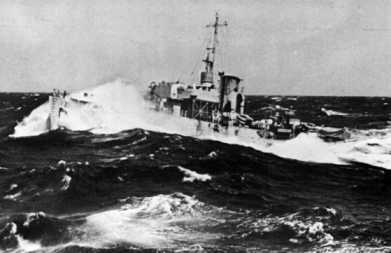 |
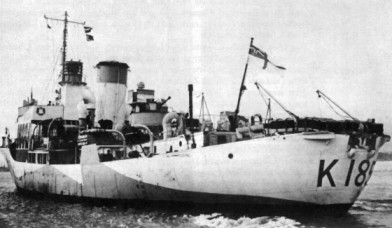 |
On the left: HMS "Alisma" a typical korvette of the "Flower" Class. This type is based on a pre-war whale trawler type. Notify the latern before the funnel. This is the place for the radar antenna type 271.
On the right: |
 |
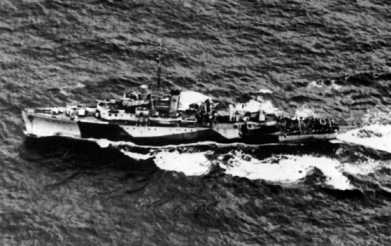 |
On the left a british sloop. On the right a fish trawler, looking not quiet impressive but their depth charges are the same, as if they are from a destroyer! |
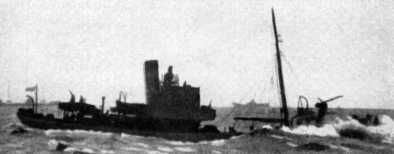 |
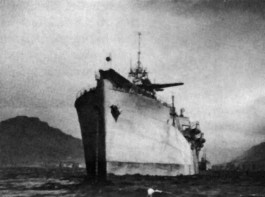 |
Not as a direct opponent for the U-boats, but used as a weapon against our eyes, the FW 200 Condor; CAM-Ships.
Catapult Armed
Merchant ships sending Hurricanes up, when a german plane
is in sight. |
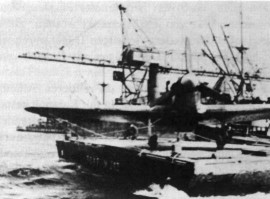 |
The base is near and thoughts are turning away from the enemy. Beware! MTBs (Motor-torpedo-boats) attacking in a pack have sunk a lot of incautious u-boats!
|
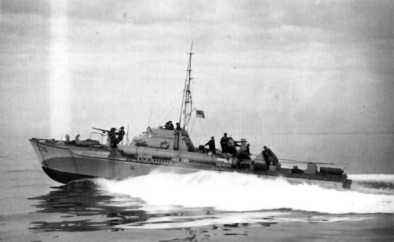 |
The pest on these airplanes! Do we have not enough trouble with escorts? They are the deadliest weapon against an u-boat! Surpise attacks, or spotting us and ordering escorts towards us. Bombs, depth charges, accustic torpedoes, Leigh lights. More than one can stand! Where is our Luftwaffe, Herr Reichsjägermeister? They are able to use the oddest planes in the near of our bases!
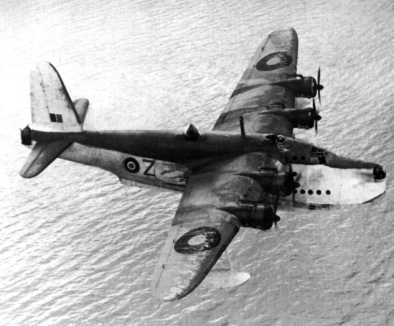 |
The Sunderland! An operational range of 5.000 km! 9 hours in the air. A crew of 13 men always eager to sink an u-boat. The Sunderland III was the last version in use. |
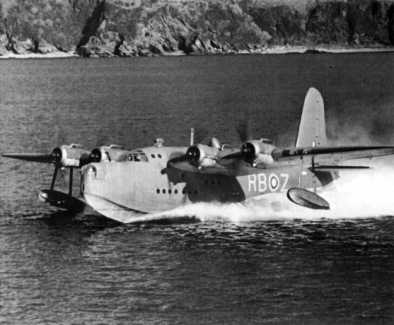 |
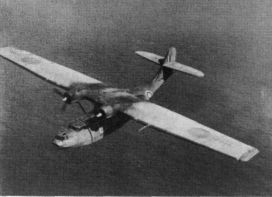 |
The american Consolidated Catalina. This airplane was also used by the british Coastal Command starting from 1941 on. The Catalina was able to stay in the air for 17 hours! And this type from the 210. squadron sunk the last U-boat on the 7th of May 1945. |
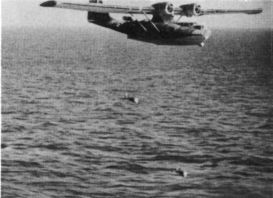 |
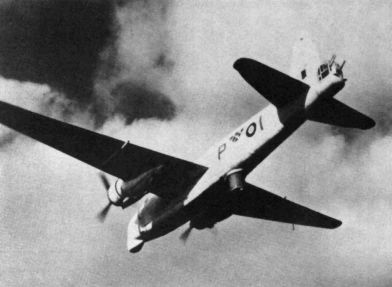 |
On the left side: A british Wellington with 10cm Radar in the chinn and Leigh lights. On the right side: A Wellington XIII of the Coastal Command with ASV-radar. |
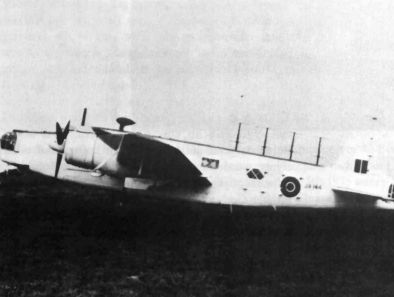 |
A collection of the oddest planes, which the british are able to use against
us, due to the missing of any air-support from the Luftwaffe. |
||
An american Lockheed Hudson in british use |
Carrier based Fairey Swordfish, nicknamed Stringbags |
A Liberator of the Coastal Command |
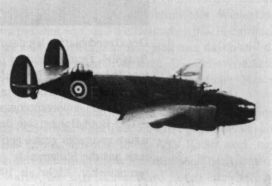 |
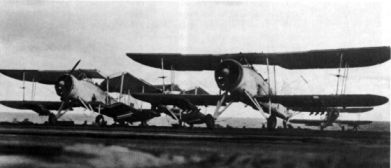 |
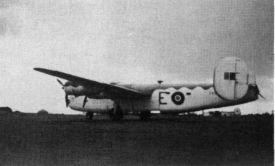 |
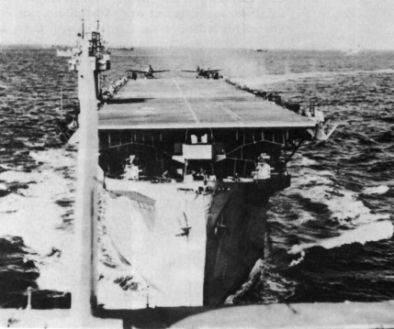 |
To give the convoys air shelter out of the range of the
airbases carriers were assigned. No place on the whole atlantic where an u-boat will be save! On the left: HMS "Bitter" a convoy carrier. On the right: HMS "Ark Royal" a fleet carrier which was sunk by our u-boats |
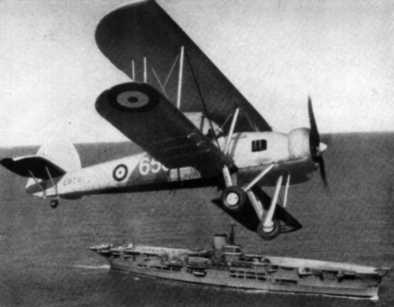 |
CAPTAIN F.W. WALKER
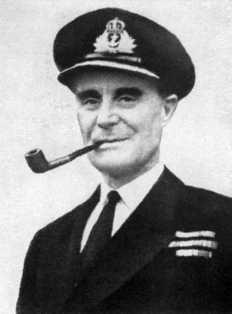 |
Gentlemen, this is our serioust enemy: Captain F.W. (Jonny) Walker!
Commander of the most succesfull u-boat hunting group with 30 confirmed
kills! |
Allied Anti-U-boat weapons
SHIP BASED
The best weapon of an U-boat is its invisibility, both on and under the sea. The best counter-measures are detecting an U-boat. Then "dumb" weapons like a depth charge, a bomb, or a granade can take over, to destroy the enemy.
ASDIC
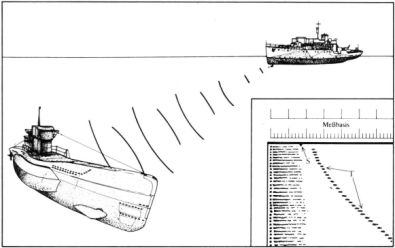 |
The Allied
Sumbmarine Detection
Investigation Commitee was founded in
1915 to find counter-measures against german u-boats in WW I. The results were too late for operative use in the first war, but during the years steady improvement lead to a final version in 1931. The ASDIC is a ultrasonic based searching system, comparable to a radar system, but using sound. The range for detecting an U-boat was between 180m and 4.600m by using a 250 Watt sender sending out pulses on a frequency of 20.000 Hertz. When an impuls hit an U-boat it was reflected and gave a peak back on paper roll showing the distance. By advancing the u-boat ASDIC was not usuable bewlo a distance of 180m. Than the destroyer captain had to decide where to place the depthcharges. |
RADAR
| Radio Detecting And Ranging systems were already in use, but not usefull for detecting u-boats, because they were too small for systems using waves length around 50cm. The invention of the 10cm magnetotrons mark NT98, mad eit possible to create the radar antenna type 271. This system using 10cm waves length became a deadly weapon against the german U-boats which were used to attack a convoy in the shelter of the night. | ||
|
|
|
An U-boat is detected in 12 km distance. |
The antenna is steered by hand in that direction |
The kontakt is plotted on a courserose and the |
HUFF DUFF
The HF/DF (High-Frequency/Direction Finding) system (nicknamed Huff Duff)
was ready for operational use until mid of 1941. It was based on the fact,
that the pack-tactic of the german U-boats needed a lot of radio messages.
U-boats shadowing convoys were sending Kontaktmeldungen with position and
course. Other U-boats radioed their position to allow the BdU to decide which
U-boats should participate the attack and further more.
The incredible range of that detecting system was about 1.500km! By sending
only one short message with a duration of some seconds the Huff Duff detected
automatically the position of the U-boat and plotted it as a base line on
a picture tube.
|
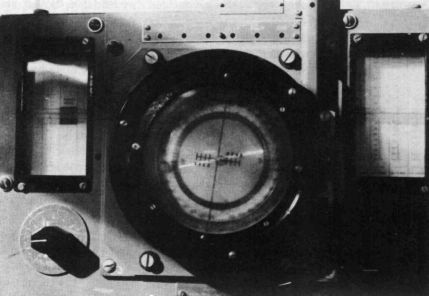 |
| The Escort Destroyer HMS Hotspur. The Huff Duff antenna (little picture)
can be found at the top of the aft pole. |
A FH4 Huff Duff system with a contact device on the picture tube. |
HEDGEHOGS
When an U-boat is detected and the enemy is faster than the U-boat, the U-boat
has to dive. Attacking with normal depth charges has some disadvantages in
combination with the use of ASDIC. The contact was lost at least below 180m.
On the other hand, an escort throwing depth charges had to run with
full speed to evade the detonations. And the depth charges could only be
dropped to the side or to the aft of the ship.
As an addition a grenade launcher (the hedgehog) was developped, which was
able to throw 24 bombs each with a warhead of 14kg in front of the ship.
The hedgehogs were fired in salvos and hit the surface 200m before the ship
with in a circle of 40m sinking with 7m per second. The boms had a
kontact ingniter which exploded, by hitting the u-boat hull. The hedgehog
saw operational service from January 1942 and 50 U-boats were destroyed with
that weapon.
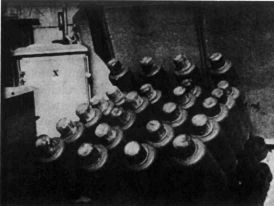 |
|
24 hedgehog bombs ready to fire |
The steering devices gave the name of the weapon |
 |
|
The salvo is released |
A good shot |
AIRPLANE BASED ANTI U-BOAT WEAPONS
The deadliest enemy for an U-boat overall is an airplane. Its speed and the
low possibilities of an U-boat for an effective counter attack on an airplane
made the airplane to a top weapon against U-boats.
Further developments in war technologies lead the way to increase the moment
of surprise and the accuracy of the weapons. With the development of airplane
based radar the bad times for the u-boats had begun.
A lot of planes were shown above. So only some words about special weapons
here.
RADAR
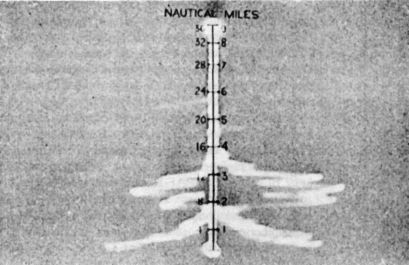 |
At the end of July 1940 the first ASV 1,5m Radar systems were handed over to the figthing troops. The first ASV systems had a range of 20km in detecting surfaced U-boats. With that system it was not possible for the U-boats to stay on the surface as they needed. In shadowing a convoy, or en route to the operational area there was always the danger to be detected from a "bee". |
LEIGH LIGHTS
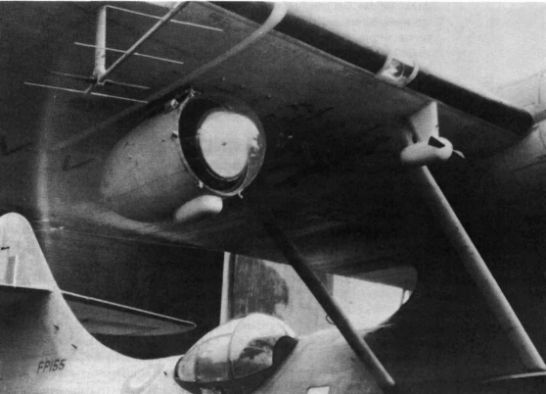 |
The night as the friend of the U-boats was getting more and more a deadly trap. When surfaced they were detected by ship- or airplane based radar and they only had the advantage that the enemy could not see them in the night. With the Leigh light that changed dramatically. This "latern" had a light power of 22 Million candle power! An U-boat was detected by radar and the plane began the sneak approach. In a distance of 1km the Leigh Light was started and the surprised U-boat crew was blinded by a light, brighter as the sun. A few seconds later the last things what they heard in their life were the roaring sound of airplane engines passing over them and the explosion of the bombs. On the left you see the Leigh light, the ASV- Yagi radar antenna and a litlle rotor for the energy system for the Leigh light mounted below a wing of a Catalina. |
German counter measures
The main problem of the german U-boats was that they were not really u-boats.
They were, more or less, diving boats which have to be the most time surfaced
for reloading the batteries and reach an acceptable travel speed.
The second disadvantage was that a detected U-boat was not able to fight
back. Against allied ships it could not fight surfaced, because one hit in
the pressure hull even from a little canon would be the end of the boat.
Fighting against airplanes was also not possibile, because the AA-guns could
not be aimed properly due to the instability of the little boat. Again, one
hit of a bomb or any other damage of the vulnerable pressure hull would be
the end.
At last, it was not possible for the german technicians to introduce early
a radar system, which could be operated from an U-boat.
The counter measures therefore were only re-active and because of the
technological disadvantage always outflanked by the allied forces.
RADAR WARNING SYSTEMS
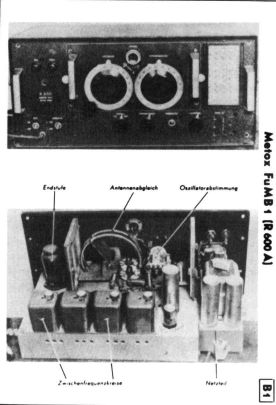 |
As a first counter message the Metox system was installed. The FuMB1 with his antenna called "Biskaya-Kreuz" made it possible to detect the radar impulses of the 1,5m ASV radar.
The disadvantage of that system was that the antenna had to be taken in the
boat by crash diving. A loss of some, sometimes deadly, seconds. |
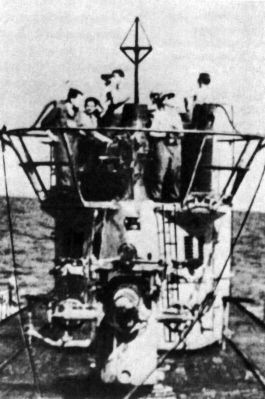 |
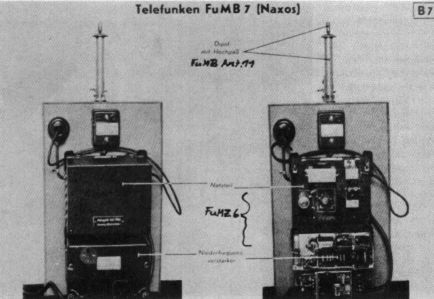 |
In March 1943 the sinking of U-boats was on a record level. Very late it was discovered that the allied forces were using a new radar system. The 10cm based H2S radar system. The wave length of 10cm was not detected by the Metox and only after the found of the H2S system in a downed british bomber near Rotterdam the truth was discoverd. The so called "Rotterdam Gerät" lead to the development of the FuMB 7 system, called Naxos . |
SCHNORCHEL
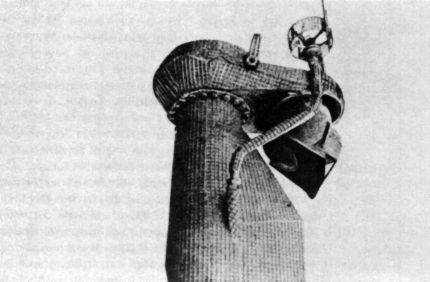 |
The schnorkel was only a poor solution to get the U-boats operational. The boats were driving below the surface with their diesel-engines. Numb to any sound contacts. The sight through the periscope was only little. And the schnorkel itself was radar detactable. On the left you see a head of a schnorkel with a "radar-absorbing" mesuare called "Sumpf" (Swamp). It was made of rubber but was easiely damaged by the waves and salt. The dipol-antenna of the "Tunis" system gave a good radar echo for 3cm systems. |
BACHSTELZE
Not able to deliver any sophicasted detecting system to the u-boats the german
scientists constructed an helicopter like vehikle called Bachstelze. This
system was for type IX boats only, because they had only the place to store
the water secured boxes on the hull.
When the boats have reached the indian ocean, where no major allied air control
had to be awaited, the Bachstelze was deployed and towed behind the boat
in a height up to 150m. When the observer spotted a contact the vehicle was
downed and dismantled. When the U-boat has to crash dive, the cable was cut
and the observer had to jump off using a parachute. Landing in the sea with
an enemy ship attacking and a submerged u-boat somewhere his chances for
survival were at zero.
The following pictures show the use of a Bachstelze.
 |
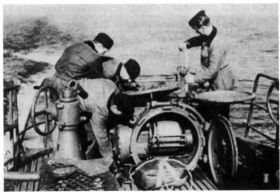 |
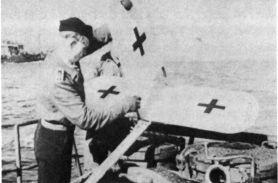 |
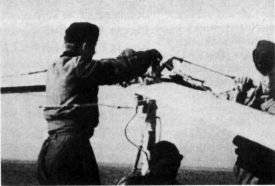 |
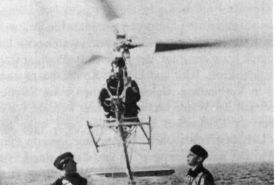 |
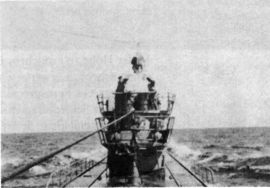 |
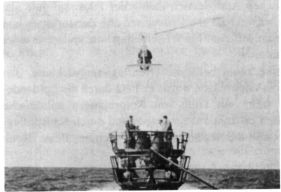 |
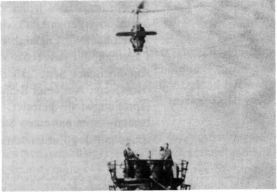 |